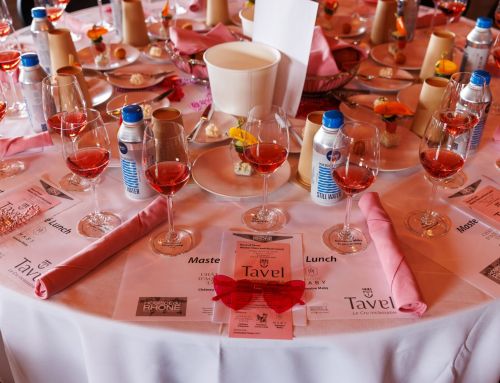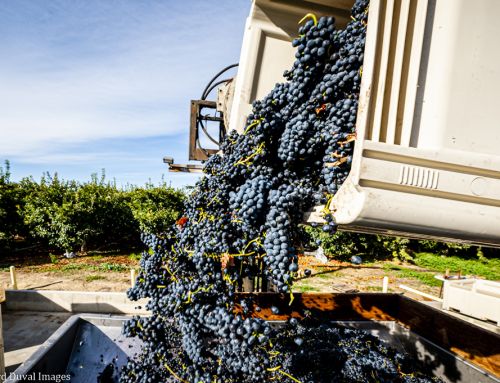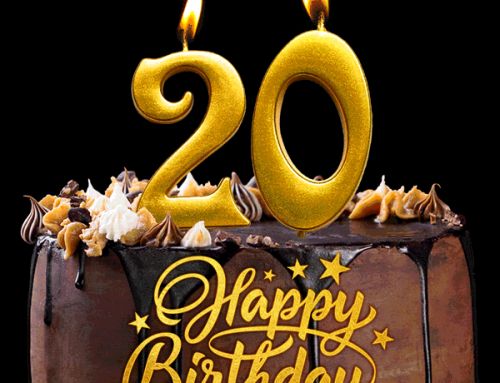Earlier this year, we welcomed the first print magazine dedicated exclusively to Washington wine – WINO. Now that WINO has six months or so under its belt, let’s take an extended look at how they are doing.
WINO fills a clear void in writing about Washington and its wine.
Enter WINO. WINO was created publisher Josh LaRosee and editor Doug Haugen. The magazine, as its irreverent title would suggest, is dedicated to bringing wine writing and drinking down a notch or two to where the non-country club set can discuss wine and enjoy it. For this, they should be commended.
WINO has settled into a rhythm with the following sections: First Impressions – This section has articles on the latest items in the industry, such as breathable wine glasses and “wine wipes”. First Impressions also includes a “Label of the Month” and a section reviewing a specific “Wine Club” with a description of the club and its offerings. The items in First Impressions have been informative, interesting, and well written. This section also contains a Venue Spotlight which focuses on an area wine bar. The strength of this section is that they stray farther afield than many a local wine drinker may. One suggestion here would be to include the address and phone number for the establishment they are reviewing. Although this information is easily available, I often find myself wondering where exactly the spot is while I am reading the article.
Ask a WINO is just what it sounds like. While many question and answer sections can be mundane (Savage Love being an obvious exception), Ask a WINO provides detailed information on topics such as Noble Rot and Residual Sugar. What are these you say? See Ask a WINO to find out.
The Features section has provided solid, if somewhat short, articles on such topics as wine touring companies and women winemakers.
Each issue, WINO focuses on a particular wine region within Washington in their Focus Region section. This section is complimented by the Wine Touring section where WINO lists specific wineries, giving each a short description and rating them on a one to five scale as: a venue, the service they provide; and their wine. For standout wineries, they give a “WINO Approved” label. This section provides excellent information on where you should go and what you can expect to find there.
In the Round Table section, WINO rates specific wines. They also provide the label for the winery which is extremely helpful. WINO’s approach to wine rating however is unique. Rather than provide a short description of the wine and a rating of some sort, WINO provides a list of descriptors by individual provided by a group of different tasters. While I love the idea of this – wine rating is always very subjective and controversial and including different people’s opinions provides value – it makes for a bit of a difficult read. It also does not answer the fundamental question or whether the taster liked the wine or not. While this is obviously deliberate, this information in my opinion is important in helping to direct people to or away from wine. Perhaps a simple thumbs up/thumbs down from each? With so much wine out there and an increasingly shrinking dollar, not to mention expanding wine prices, I find myself wanting a little bit more direction about individual wines than I find here. However, as we all know, wine rating is a slippery slope, and WINO has deliberately steered away from it.
Much more successful in the Round Table section is their graphical charts (Note: these do not appear in the on-line edition) for each wine that show, in a visual form, the wine’s Sweet/Fruit, Sour/Acid, Earthy/Herbacious, Bitter/Tannic profile. A friend of mine and I have long been drawing pictures of how the wines we are sampling taste. These pictures convey a great deal of information missing from most wine evaluations, my own included I might add. This is an excellent addition that I would expect other publications might adopt.
The Cheapskate section focuses on the inexpensive wines we all seek out. These reviews are informative and well written. Interestingly, in each issue, the author compares each wine to something – a Mario Brothers or Teenage Mutant Ninja Turtle character, a country, etc. This is a cute idea to mix it up a bit but does not come off entirely in my opinion, not to mention it will most likely become increasingly difficult to do.
The Vine Curmudgeon section has focused on several different areas, from organic viticulture to prohibition. I have, however, not quite been able to get the general idea behind this section.
Higher Learning has focused on different topics from the science behind “mouth feel” (successful) to Mesopotamia (less successful).
The Last Glass which closes out the magazine has varied from interviews with winemakers to guest articles by the likes of Rusty Figgins.
Overall, WINO has filled a clear gap in Washington wine writing and has done it very well, evolving and improving with each issue. WINO helps in addressing one of the fundamental problems with Washington wine at the moment – with so many wineries out there, how does one know where to go or what wine to choose.
WINO is free and can be found at the locations listed here. You can also have the magazine delivered to your doorstep for a very affordable $3 an issue. The magazine is currently published bi-monthly. WINO also has a website that started as a supplemental to the magazine but has evolved into a full fledged site that contains each issue as well as additional articles and information.
If you haven’t picked up an issue yet, the November/December issue recently hit the shelves. Pick it up or check it out on-line.







Recommendation #1 for Wino improvement: hire Sean Sullivan. Of course, given the low, low price of $0.00 per issue, salaries might be somewhat limited.
Thanks for the nice overview, Sean. As swordfern suggested, I think I’ll hire you. Payment in wine is sufficient, I presume?
Is it that obvious that I have “will work for wine” written across me?
I’ve long been a participant in the Work for Wine program. While the salary is low, the wine can be considered fringe benefits like “health” and “vacation.”
It’s despicable how they trashed the wineries in their first two issues. Woodinville and Chelan specifically. In an attempt to be humorous and pithy, they gave misleading interpretations about what you should expect at each winery tasting room. Shame on your publication.
Hi, “Anonymous.” I hope you got a chance to read much or all of the other content that we provide in each and every issue. Along with our pithy, opinion-driven reviews of regional wineries, we aim to inform and educate our readership in effort to create a strong, always growing consumer base for the industry that we support. Forest for the trees, right? As for you comment, surely “despicable” is a bit harsh, no? You aren’t even specific as to which wineries we addressed unfavorably! And, just so you know, we encourage everyone to experience the industry themselves rather than just read about it. That has always been the message of what we do. While we might not care of this wine or that winery, you might find them to be a favorite. That is the beauty of it all. I’m sure you can agree with us there. Right, Anonymous?
“Despicable” might seem harsh, but to publish comments like “I might have purchased a bottle of two, had it washed the bad taste out of my mouth” at Sparkman, or “winemaker Larry Lehmbecker was polite but curt, much too engaged with matters of consequence to talk to me” at Vin Du lac, or even “Winemaker Derek DesVoigne [gave] the feeling they were just waiting for us to leave” at Cuillin Hills reeks of someone who expects extra special attention from each winemaker to validate his wine writer status, and when he didn’t get it he becomes vindictive in his review. These are just a few of many similar comments that are just so unneccessary. I stand by my original comments.
Hello, again, Anonymous! I’d just be tickled to take this conversation to a private channel where I could better talk to you about a) the comments in question, and b) your further thoughts on our publication and the direction of local wine as a whole. (You have yet to weigh in on the bulk of our content.) Wouldn’t that be more fun? I’ll buy you a beer. Shoot me an email, you know the one, and we’ll go from there. There’s no need for you to be so shy. As for continuing in this sort of flabby flame war with a post-with-no-name, I just don’t see the point. Know what I mean?
Cheers, good sir or madame! I await your call.
This comment has been removed by the author.
While this conversation is probably best suited for a private channel (as Josh suggests), I feel that a couple of things need to be clarified here. First, particularly in the first two issues, we made it a point not to introduce ourselves in most cases, because we wanted the experience that any average wino would experience when visiting a winery. We did not want special attention as members of the media; we just wanted to visit the wineries and see what visitors should expect. Second, WINO is committed to journalistic integrity. The comments you quote, Anonymous, were true, despite the fact that we visited the wineries as average customers.
Our goal at WINO is not to “trash” those in the industry we’re trying to support. We are proud of how far the Washington wine industry has come, we’re excited to see where it’s going, and we’re calling attention to Washington wine because it’s damned good stuff. The Washington wine industry has fought its way onto the world stage, and deserves accolades for its accomplishments. That being said, we also respect our readers enough to give them honesty and accuracy. They deserve it.